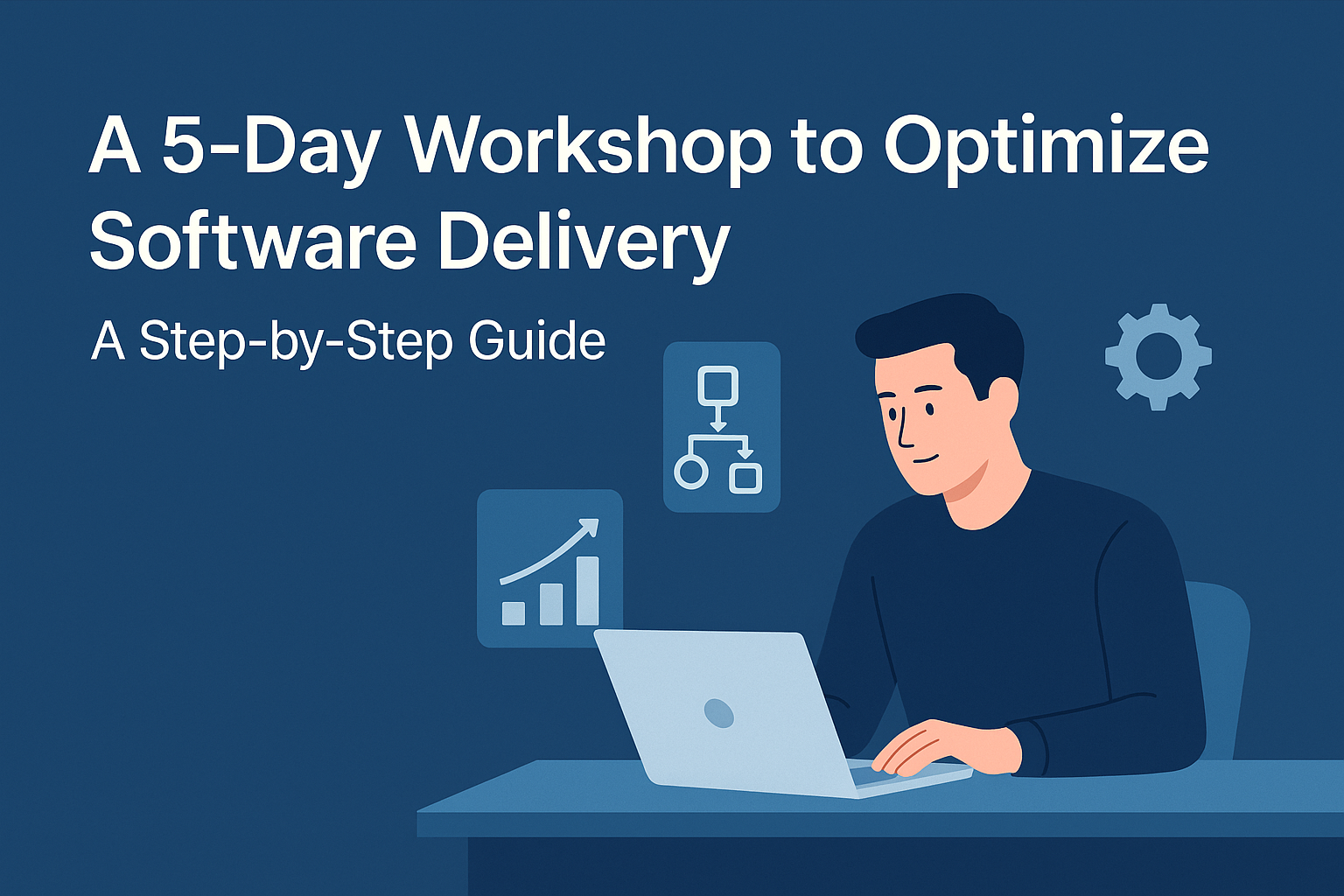Our Workshop to Optimize Your Software Delivery: A Step-by-Step Guide
Discover our 5-day workshop to optimize software delivery performance. Step-by-step guide to identifying bottlenecks, improving DevOps metrics (MTTR, lead time, deployment frequency) and implementing cultural/technical changes.May 1, 2025

In today's fast-paced software development landscape, efficiency, reliability, and continuous improvement are critical. Many organizations struggle with bottlenecks, slow deployments, and high failure rates—issues that hinder innovation and business growth.
To address these challenges, we've designed a 5-day intensive workshop aimed at assessing and improving software delivery performance. This article breaks down each day's activities, key takeaways, and long-term strategies for sustainable success.
Workshop Overview
Objective:
- Identify bottlenecks in the software delivery process
- Establish key performance indicators (KPIs) for continuous improvement
- Assess technical practices and team culture
- Develop short-term and long-term action plans for optimization
Key Metrics Tracked:
- Mean Time to Restore (MTTR) – How quickly can the team recover from failures?
- Deployment Frequency – How often does the team release updates?
- Lead Time for Changes – How long does it take from code commit to production?
- Change Failure Rate – What percentage of deployments cause issues?
Day 1: Understanding the Current State
Morning: Team Introductions & Workshop Goals
- Icebreaker Activity – Build rapport with questions like:
- "Where in the world would you love to work remotely?"
- "What's the quirkiest bug you've ever encountered?"
- Workshop Goals – Emphasize trust-building and a blame-free environment
Afternoon: Value Stream Mapping & Bottleneck Identification
- Value Stream Mapping – Visualize the entire process from feature request to deployment
- Bottleneck Analysis – Identify delays in development, testing, approvals, or deployment
- Gather Baseline Metrics – Collect existing data on MTTR, lead time, and deployment frequency
Key Takeaway: A clear visual representation of the workflow helps teams see inefficiencies they may have overlooked
Day 2: KPIs and Organizational Culture
Morning: Why Metrics Matter
- Discuss the four key metrics and their impact on business success
- Highlight gaps between tracked KPIs and actual business value
Afternoon: Qualitative Assessment
- Team Surveys – Assess psychological safety, trust, and willingness to experiment
- Group Discussion – Align KPIs with business goals and identify missing measurements
Key Takeaway: A strong culture of transparency and continuous learning is just as important as technical excellence

Days 3-5: Technical Practices Assessment
Focus Areas:
- Tool Stack Review – Version control, CI/CD pipelines, testing frameworks
- Code Review (Optional) – Identify technical debt, over-engineering, or test coverage gaps
- Deployment Process Analysis – Pinpoint manual steps and automation opportunities
Day 5 Wrap-Up: Recommendations & Action Plan
- Quick Wins – Simple automation, process streamlining
- Mid-Term Goals – Training, better metrics tracking, leadership alignment
- Long-Term Strategy – Architectural improvements, cultural shifts, and self-assessment models
Key Takeaway: Investing in skills and automation leads to faster, more reliable deployments
Long-Term Vision: Continuous Improvement
The workshop is just the beginning. To sustain improvements:
✅ Establish a KPI monitoring cadence
✅ Encourage a culture of experimentation and learning
✅ Revisit processes periodically to adapt to new challenges
Final Thoughts
Optimizing software delivery isn't just about tools—it's about people, processes, and culture. By combining data-driven insights with team collaboration, organizations can achieve faster, more reliable deployments while fostering innovation.
Interested in running this workshop for your team? Let's connect through email or a schedule a meeting and tailor this workshop to your needs!